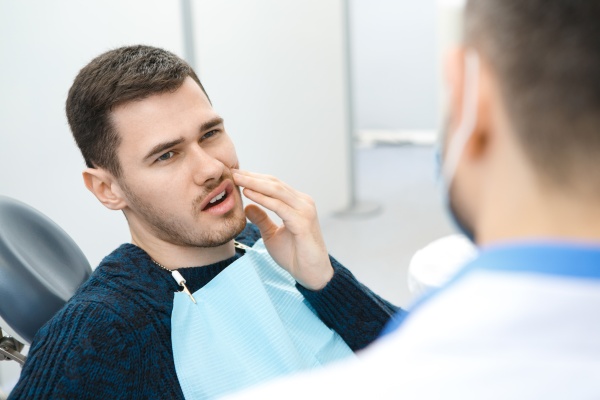Ask a Dentist: What is the Right Sleeping Position for TMJ?

Temporomandibular joint syndrome, commonly referred to as TMJ, is a pain in the jaw joint that can be caused by joint abnormalities, arthritis or other medical conditions. Common treatments include dietary changes, stress reduction, muscle stretching, physical therapy and anti-inflammatory medications. Changing sleep positions can also reduce symptoms in some cases.
How sleep position affects TMJ symptoms
Strain on the head, neck, face or jaw can worsen TMJ symptoms. Waking up with increased levels of jaw pain can be a sign that sleep position is making symptoms worse. How a person positions the body during sleep can affect multiple factors that contribute to jaw pain:
- Teeth grinding and clenching
- Muscle tension and strain in the head, neck and shoulders
- Head and neck support
- Pressure on the head, neck and jaw
Sleep positions that may help and ones to avoid
Sleeping on the stomach or side can push the jaw back towards the skull or to the side, depending on the head position of the sleeper. This increased pressure on the jaw can intensify symptoms. Additionally, turning the head to the side while sleeping may create tension that makes TMJ worse.
Sleeping on the back is considered an ideal position for reducing pain because it avoids pressure on the jaw, keeps the head and neck in better alignment, provides increased support for the head, neck and shoulders and makes it less likely that teeth clenching or grinding will occur. However, it is important to avoid creating tension in the neck by elevating the head too much. Back sleepers should avoid using pillows that are too firm or too thick and refrain from propping their heads up with their hands because this can create neck strain.
Pressure on the jaw can be further reduced by training the tongue to rest on top of the teeth. Relaxing the tongue on top of the teeth helps to keep the jaw slightly open, which can reduce the chance that teeth clenching or grinding will occur.
Sleeping flat on the back can make some health conditions such as sleep apnea and acid reflux worse. People who have health issues that may be impacted by their sleep habits should consult with a doctor to determine whether changing sleep position is an appropriate TMJ treatment option.
Adjusting to a new sleep position
According to sleep surveys, only about 10-15% of people sleep on their backs, and many individuals have difficulty adjusting to back sleeping. This transition can be made easier by placing a small pillow under the arch of the spine and sleeping on an adjustable mattress or a mattress that conforms to the body. A supportive orthopedic pillow may also help hold up the neck. Experimenting with different arm and leg positions may also increase comfort. However, placing the arms over the head should be avoided.
Conclusion
Patients with persistent jaw pain should consult a medical professional for an evaluation of the problem and determination of appropriate treatment options. Changing sleep positions can be helpful for many people, but they may not work for everyone.
Request an appointment here: https://www.mytotaldentistry.com or call McCarthy Dentistry at (740) 546-5178 for an appointment in our Marietta office.
Check out what others are saying about our services on Yelp: Read our Yelp reviews.
Recent Posts
For many patients, Invisalign® treatment is a good alternative to traditional braces. Treatment time is often shorter, and patients can maintain better oral hygiene during the process. This type of orthodontic treatment uses a series of clear aligners to straighten teeth. The patient wears the trays for 20-22 hours a day, only removing them for…
An effective and yet inconspicuous way to straighten the teeth, Invisalign® gives individuals the flexibility to enjoy a wide range of foods while undergoing the teeth straightening process. When compared to traditional braces that come with a long list of what can be eaten and what needs to be avoided, removable alignment trays bring more…
Patients who choose Invisalign® are generally able to maintain a more normal lifestyle than patients wearing traditional braces. Patients with wire-and-bracket braces, or those who had such braces in the past, likely remember at least one instance in which they had to visit the emergency orthodontist to replace a part or fix a broken wire,…
A dental filling is important in achieving good dental health and a painless smile. This dental restoration can seal the tooth and protect it from further decay. Knowing when to get fillings can help you achieve your smile goals earlier. Here are the signs your tooth may need a dental filling right away.Pain often develops…


